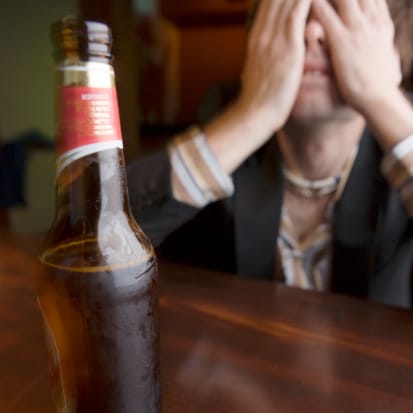What if alcohol education and addiction prevention weren’t so much about shaming the user or relying on fear and shock factors to force better behavior? What if the conversation could come from a place of understanding, encouragement, and a desire to help people not necessarily become teetotalers, but smarter, more mindful consumers of alcohol? “Rethinking Drinking” is a small resource that has the potential for big impact. This short booklet, issued by the National Institute on Alcohol Abuse and Alcoholism (NIAAA), takes an interesting and helpful approach to adult consumption of alcohol and the prevention of alcoholism and binge drinking. Far from assuming an exclusively pro-sobriety stance, the NIAAA seeks to help those who choose to enjoy alcohol to reconsider the manner in which they consume it and the quantity that they drink. The NIAA is not proclaiming that people must stop drinking, not necessarily anyway, but instead encouraging people who do consume alcohol to begin to get a bit of clarity and perspective around that consumption. In a very approachable, conversational, and non-judgmental tone, the booklet educates readers on a subject that, despite its ubiquity, continues to perplex American society. The NIAAA, seeing this confusion, takes on the task of setting the record straight on what constitutes normal drinking, and providing helpful information and tools for gauging one’s own drinking habits. For example, where is the line that separates normal drinking from problem drinking or alcoholism? The first section, “How Much Is Too Much?,” helps readers assess their own level of drinking in order to decide if their current consumption is “normal,” or non-problematic, or if they may be moving into the territory of “too much,” or problem drinking. Take the Test As professionals in the area of addiction know, alcohol is staggeringly habit forming. It is easy to gradually increase consumption over time without realizing it because the body naturally develops a tolerance to alcohol, making greater quantities necessary to achieve the desired level of buzz or relaxation. Though the individual is achieving more or less the same buzz, he or she may be consuming more without thinking about it. The NIAAA sees the potential for danger in this practice. Patterns of heavy drinking, over time, take a physical and psychological toll and can be a precursor to alcohol dependence, or alcoholism. With this booklet, the organization issues a gentle wakeup call to help people get perspective around their drinking habits and perhaps implement positive change. By providing statistics on average levels of alcohol consumption in the United States, readers are able to see if their level of drinking is commensurate with that of others. As the book notes, most people tend to assume the general population drinks more than it does and that they drink less than they do. Matching personal consumption to national averages can help those who consume alcohol to see if they fall outside of “normal” levels. Following the questionnaires, the reader is encouraged to engage the question that anyone who chooses to consume alcohol should ask is: Does my drinking cause harm? The second section, “Thinking About A Change?,” educates readers about how to cut back their drinking if they have determined, after reading the first section, that their current drinking patterns are approaching unhealthy levels. This section, beyond simply instructing the individual to cut back, also provides helpful, practical resources for cutting back drinking and monitoring consumption. Resources include action plans, personal assessment worksheets, drinking tracker cards, and suggestions for how to get help and accountability around drinking if the individual thinks he or she has problem. Additionally, there are tips on how to resist the pressure to drink and advice on what can be done to break some of the bad habits people tend to establish around drinking. The target audience for this resource is moderate to heavy drinkers—those who are still able to exercise the power of choice around their drinking, but may not be mindful of their drinking habits. If, after employing the tips presented in the booklet, the individual is unable to moderate drinking, a more intensive and focused approach, such as Alcoholics Anonymous or treatment, may be required. Want to know if your levels of alcohol consumption are normal or problematic? Looking for tips and resources on cutting back? “Rethinking Drinking” is a free resource available from the National Institute for Alcohol Abuse and Alcoholism.

